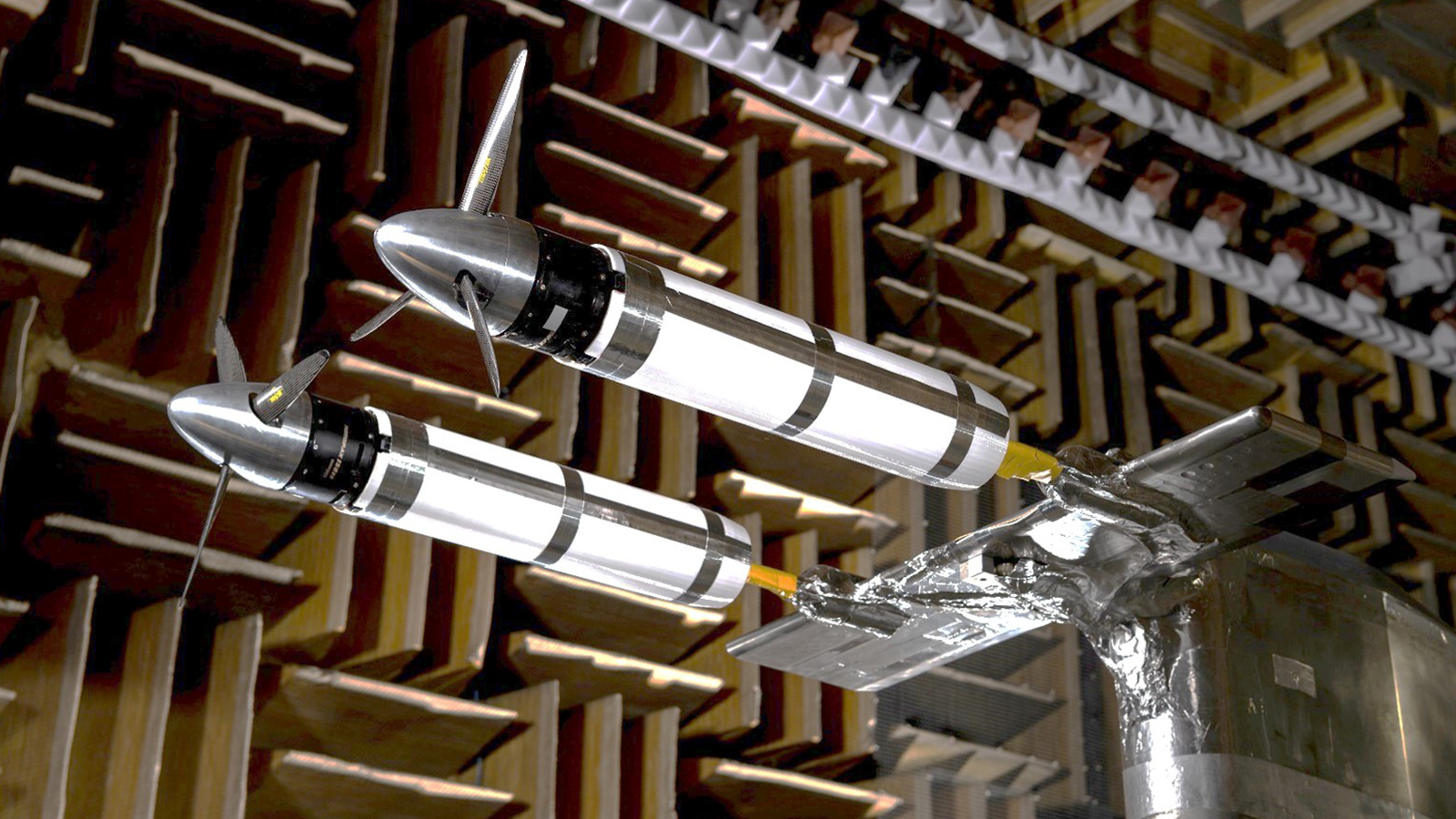Stay Up to Date
Submit your email address to receive the latest industry and Aerospace America news.
The Aeroacoustics Technical Committee addresses the noise produced by the motion of fluids and bodies in the atmosphere and the responses of humans and structures to this noise.
Seeking to understand the interactional noise mechanisms associated with unmanned air systems and urban air mobility vehicles, researchers at NASA’s Langley Research Center in Virginia conducted experiments in September in the Low Speed Aeroacoustic Wind Tunnel. The research team measured the aerodynamic and acoustic performance of multiple propellers interacting with a traversable, meaning moveable, wing geometry.
In March, the U.S. Transportation Department’s Volpe Center in Massachusetts, in conjunction with the Helicopter Association International HeliExpo 2019 and the Fly Neighborly Committee, released an online pilot and operator training program through the website of the FAA WINGS pilot proficiency program. Aircraft noise data and modeling developed in partnership with NASA, FAA and the U.S. Army was inserted directly into the WINGS training program to help pilots fly quieter.
With funding from Uber Elevate, the Advanced Acoustic Model simulation tool, a computer program that calculates community noise from aircraft flight operations, was updated in May by Volpe to support research in the assessment of community noise and audibility of electric vertical takeoff and landing aircraft.
In June and July, NASA and FAA conducted helicopter noise abatement tests at Coyle Field, New Jersey, with a Sikorsky S-76D, a U.S. Coast Guard HH-65 Dolphin (a variant of the commercial Airbus AS365 Dauphin), a Leonardo AW139 and a Bell 205 with the goal of improving community acceptance of helicopter operations.
In the area of supersonic flight, researchers briefed the International Civil Aviation Organization’s Working Group 1, which is concerned with aircraft noise, in April about the results of the November 2018 sonic thump community response testing in Galveston, Texas. The results of the flights by NASA F/A-18 jets were also briefed at AIAA’s Aviation Forum in June. Data from the Galveston flights is helping guide researchers in preparation for community response flights by NASA’s X-59 low boom demonstration aircraft.
In July and August, NASA F/A-18 test aircraft flew over the Mojave Desert where researchers from Volpe and Brigham Young University tested a 30-mile-long microphone array in preparation for acoustic testing and validation of the X-59.
Turning to conventional jets, analyses of measured flyover noise data from a full-scale Boeing 737-7 with a NASA-designed advanced inlet acoustic treatment demonstrated a 3.2 decibel cumulative reduction in inlet noise. Research progressed this year toward meeting NASA’s Advanced Air Transport Technology goal of 4 db or 37% airframe noise reduction for a high-lift tube and wing configuration. This progress was enabled by a December 2018 test in the 14-by-22-foot Subsonic Tunnel at Langley in which a novel in-wall microphone array isolated slat noise from other noise sources. This array was recessed behind an acoustically transparent screen to perform measurements on a 10%-scale high-lift aircraft model.
Sponsored by the U.S. Office of Naval Research, researchers from Lockheed Martin, Spiritech and Penn State completed an investigation of the noise reduction potential of Spiritech’s STAR, for Multi-Stream Coupled Throat Variable Rotating, nozzle concept. The May results showed significant noise reductions for static takeoff engine power settings when compared with contemporary tactical aircraft jet exhaust nozzles.
Also this year, significant facility advancements were made. Specifically, improved microphone array measurements were realized in May when ATA Engineering and the University of California, Irvine, performed jet noise measurements using a collection of both stationary and continuously moving microphones. The technique approached the theoretical limits of a continuous series of sensors using only a modest number of microphones.
Advancements in aeroacoustic wind tunnel testing were realized in June when NASA’s Glenn Research Center in Cleveland completed a renovation of the 9-by-15-foot Low Speed Wind Tunnel using a novel “aerodynamically smooth but acoustically transparent” surface developed in collaboration with Jacobs Engineering and Virginia Tech. The new lining makes the walls of the tunnel seem acoustically invisible and virtually eliminates the problem of separating the noise of the wind tunnel itself from the noise of the flow over the test article mounted inside the tunnel.
Contributors: Christopher Bahr, Cliff Brown, David Lockard, Doug Nark, Eric Nesbitt, Juliet Page, Tony Pilon, Parthiv Shah, Jonathan Rathsam and Nik Zawodny
Stay Up to Date
Submit your email address to receive the latest industry and Aerospace America news.




